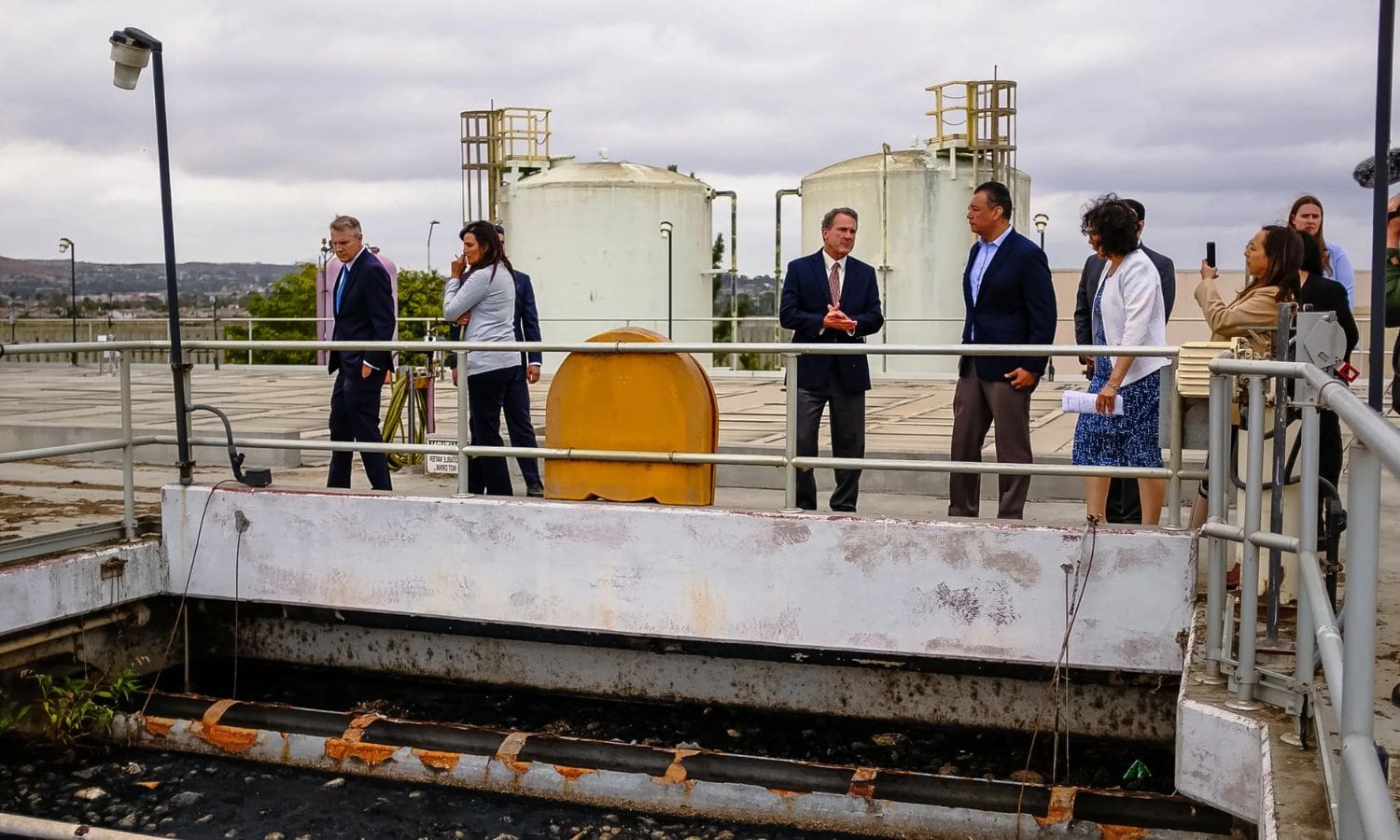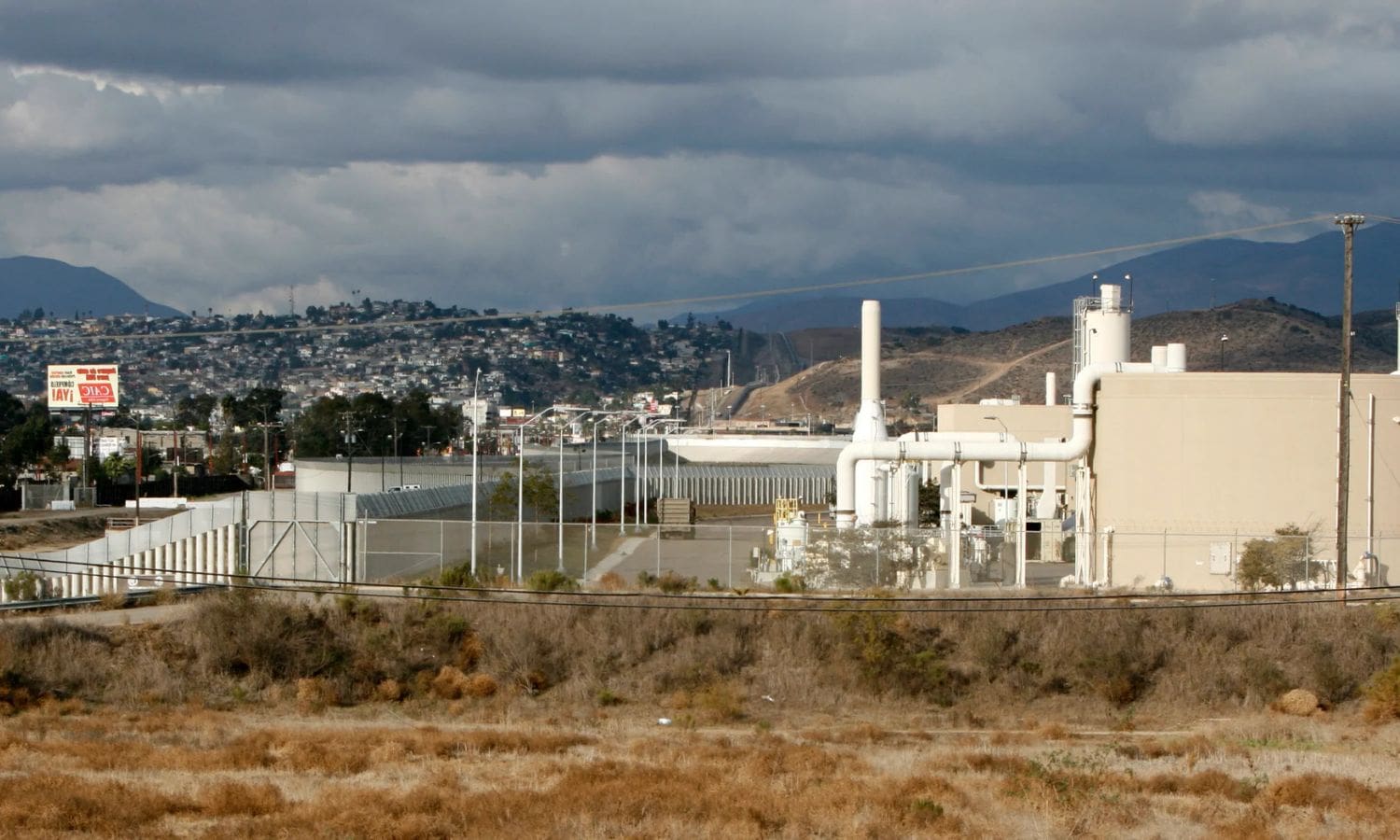Mexican Sewage Plant: In the face of longstanding pollution woes in Imperial Beach, a Mexican plant has emerged as a potential solution to the health concerns, economic losses, and environmental damage plaguing the southern California coast.
The reconstruction project aimed at mitigating transboundary pollution and highlights the international collaboration between the United States and Mexico in addressing this critical issue.
As ongoing challenges persist, the Imperial Beach Mayor advocates for continued vigilance in protecting the coastal ecosystem.
Key Takeaways Of Mexican Sewage Plant
– The ongoing pollution in Imperial Beach from the Tijuana River poses a threat to marine life and the health of beachgoers.
– The pollution has resulted in significant health concerns, economic losses, and environmental damage in Imperial Beach.
– The reconstruction project at the San Antonio de los Buenos wastewater treatment plant in Tijuana aims to reduce transboundary pollution by upgrading infrastructure and implementing advanced treatment technologies.
– The collaboration between the United States and Mexico is focused on research, development, and public awareness to address pollution and protect the coastal areas of Southern California.


Also Read: San Jose Records First Pedestrian Traffic Fatalities in 2024
Pollution Woes in Imperial Beach: A Longstanding Crisis Unveiled
Amidst the ongoing pollution woes in Imperial Beach, a longstanding crisis is unveiled as the Mexican plant near Tijuana offers hope for Southern California’s coast. For years, Imperial Beach has been plagued by high levels of pollution, particularly in its waterways. The contamination comes from the Tijuana River, which flows into the Pacific Ocean and affects the beaches in the region.
This pollution has had detrimental effects on the local ecosystem, posing a threat to marine life and the health of beachgoers. However, the reconstruction of the defunct wastewater treatment plant near Tijuana by Mexico’s military is a significant step towards addressing these issues. The upgraded plant is expected to improve the quality of the treated water that is discharged into the ocean, reducing pollution and safeguarding the coastal environment.
This development brings hope for cleaner beaches and a healthier coastline for Southern California.
Impact on Imperial Beach: Health Concerns, Economic Losses, and Environmental Damage
The ongoing pollution in Imperial Beach has resulted in significant health concerns, economic losses, and environmental damage over the years.
The untreated effluent from the San Antonio de los Buenos wastewater treatment plant in Tijuana has been flowing onto the beaches, releasing millions of gallons of raw sewage into the Pacific Ocean. This has had serious implications for the health of both residents and visitors to Imperial Beach, as exposure to the contaminated water can lead to gastrointestinal illnesses, skin infections, and respiratory problems.
Additionally, the pollution has had a detrimental impact on the local economy, as tourists are deterred from visiting the beach and local businesses suffer.
Furthermore, the environmental damage caused by the pollution has affected marine life and ecosystems in the area, disrupting the delicate balance of the coastal environment.
The situation in Imperial Beach calls for immediate action to address the health concerns, economic losses, and environmental damage caused by the ongoing pollution.


Reconstruction Project: Mitigating Transboundary Pollution
A significant step towards mitigating transboundary pollution is underway with the reconstruction project at the San Antonio de los Buenos wastewater treatment plant in Tijuana. This project, initiated by the Mexican federal government, aims to address the contamination caused by the facility, which captures around 25% of the sewage generated by the Tijuana metropolitan area.
The reconstruction will involve upgrading the plant’s infrastructure and implementing advanced treatment technologies to improve the quality of the treated wastewater before it is discharged into the ocean. This will help reduce the amount of pollutants that flow into the coastal waters and impact the Southern California coast, including Imperial Beach. The table below provides an overview of the key improvements being made as part of the reconstruction project.
The reconstruction project at the San Antonio de los Buenos wastewater treatment plant is a crucial step towards mitigating transboundary pollution and protecting the health and environment of the coastal areas.
International Collaboration: U.S. and Mexico Join Forces to Address Pollution
As part of a binational effort, the United States and Mexico are collaborating to address pollution and protect the coastal areas of Southern California. This international collaboration aims to mitigate the transboundary pollution that has been affecting the Cali-Baja community. The joint effort involves a comprehensive plan and the commitment of significant resources to tackle the issue effectively.
The collaboration between the U.S. and Mexico includes the following key initiatives:
1. Developing advanced wastewater treatment technologies: Both countries are investing in research and development to create innovative solutions for treating wastewater and reducing pollution levels.
2. Enhancing monitoring and enforcement: Efforts are being made to strengthen monitoring systems and improve enforcement capabilities to ensure compliance with environmental regulations and prevent pollution incidents.
3. Promoting public awareness and engagement: The collaboration aims to raise public awareness about the importance of pollution prevention and involve local communities in environmental protection initiatives.
Ongoing Challenges: Imperial Beach Mayor Advocates for Continued Vigilance
Imperial Beach Mayor Aguirre emphasizes the necessity for ongoing vigilance in addressing the challenges faced in protecting Southern California’s coast.
While the Mexican plant offers hope for improving water quality, Aguirre recognizes that there are still ongoing challenges that need to be addressed.
One of the main concerns is the need for complementary efforts in the U.S., particularly the expansion of the South Bay Wastewater Treatment Plant.
Aguirre calls for additional funding to address the facility’s needed repairs, expressing concern about the financial constraints.
Without these necessary repairs, the plant may not be able to effectively treat wastewater, putting the coastal ecosystem at risk.
Aguirre’s advocacy for continued vigilance highlights the importance of maintaining and improving the infrastructure in order to protect Southern California’s coast for future generations.


Conclusion Of Mexican Sewage Plant
The pollution crisis in Imperial Beach has had severe impacts on the health of its residents, the local economy, and the environment. However, through an ongoing reconstruction project and international collaboration between the U.S. and Mexico, there is hope for mitigating transboundary pollution.
Despite ongoing challenges, the Mayor of Imperial Beach continues to advocate for continued vigilance in addressing this pressing issue. This collaborative effort offers hope for the future of Southern California’s coast.
Our Reader’s Queries
Q1. What happens to sewage in California?
A. California manages its wastewater through an extensive network of 100,000 miles of sanitary sewer lines and over 900 wastewater treatment plants. These facilities collectively handle the substantial volume of approximately 4 billion gallons of wastewater generated in the state each day.
Q2. What is the purpose of the sewage treatment plant?
A. Sewage treatment plants play a crucial role in collecting, treating, and safely discharging wastewater—a service vital for both environmental preservation and public health. The absence of proper treatment poses the risk of sewage leaching into the environment, leading to contamination of ecosystems.
Q3. What are the 3 types of sewage treatment?
A. The wastewater treatment process unfolds in three primary stages, aptly named primary, secondary, and tertiary water treatment. In certain applications, a more advanced level of treatment is necessary, referred to as quaternary water treatment.
Q4.Does California have a sewer system?
A. With the exception of parts of Old Sacramento, all other cities in California operate separate sewer systems, involving the presence of two distinct sets of pipes beneath the ground.
Q5. What is the last stage of sewage treatment plant?
A. In the realm of wastewater treatment, tertiary treatment, commonly known as effluent polishing, serves as the ultimate step in the process. When disinfection is implemented, it consistently marks the final stage of the treatment.
Q6. Who regulates wastewater in California?
A. The Water Boards oversee and regulate the release of wastewater into surface water, such as rivers and the ocean, as well as into groundwater through land-based methods.
Q7. What is the Colour of septic waste water?
A. Fresh sewage typically exhibits a slight grey color, while older sewage, often referred to as “septic sewage,” takes on a darker grey or black hue over time.

